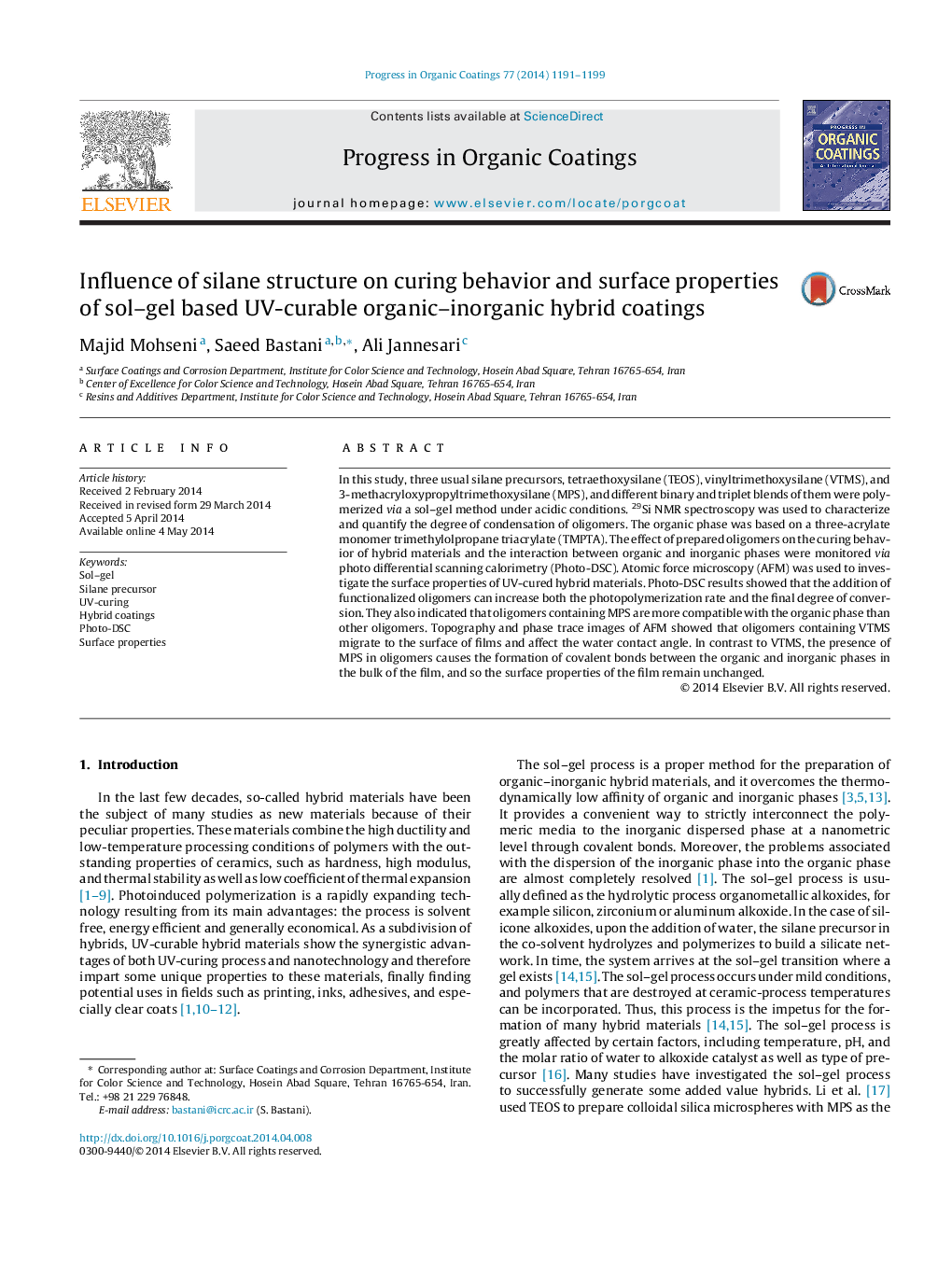| Article ID | Journal | Published Year | Pages | File Type |
|---|---|---|---|---|
| 692716 | Progress in Organic Coatings | 2014 | 9 Pages |
•We prepared UV-curable organic–inorganic hybrid coating via sol–gel process.•The sol–gel process was carried out at ambient temperature.•We examine the effect of functionality on the curing behavior of coatings.•We studied the effect of silane structure on surface properties of coatings.
In this study, three usual silane precursors, tetraethoxysilane (TEOS), vinyltrimethoxysilane (VTMS), and 3-methacryloxypropyltrimethoxysilane (MPS), and different binary and triplet blends of them were polymerized via a sol–gel method under acidic conditions. 29Si NMR spectroscopy was used to characterize and quantify the degree of condensation of oligomers. The organic phase was based on a three-acrylate monomer trimethylolpropane triacrylate (TMPTA). The effect of prepared oligomers on the curing behavior of hybrid materials and the interaction between organic and inorganic phases were monitored via photo differential scanning calorimetry (Photo-DSC). Atomic force microscopy (AFM) was used to investigate the surface properties of UV-cured hybrid materials. Photo-DSC results showed that the addition of functionalized oligomers can increase both the photopolymerization rate and the final degree of conversion. They also indicated that oligomers containing MPS are more compatible with the organic phase than other oligomers. Topography and phase trace images of AFM showed that oligomers containing VTMS migrate to the surface of films and affect the water contact angle. In contrast to VTMS, the presence of MPS in oligomers causes the formation of covalent bonds between the organic and inorganic phases in the bulk of the film, and so the surface properties of the film remain unchanged.
